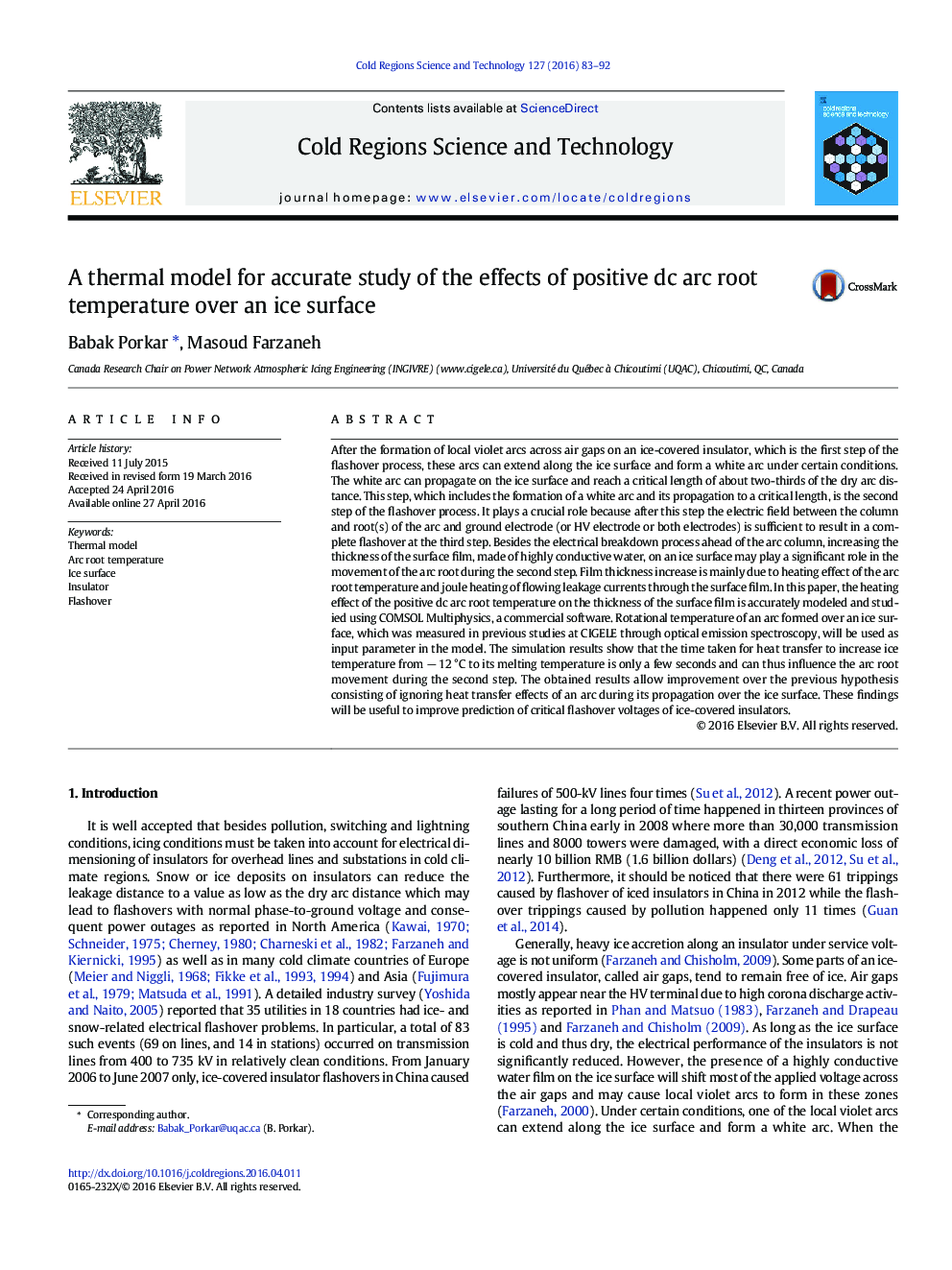| Article ID | Journal | Published Year | Pages | File Type |
|---|---|---|---|---|
| 4675651 | Cold Regions Science and Technology | 2016 | 10 Pages |
•A thermal model to study the effects of arc root temperature on the thickness of the water film on an ice surface,•The time from the white arc formation to flashover on an inclined ice-covered insulator string is about a few ten seconds,•Within this time interval, thermal effects of arc can play a key role as shown by the simulations results.
After the formation of local violet arcs across air gaps on an ice-covered insulator, which is the first step of the flashover process, these arcs can extend along the ice surface and form a white arc under certain conditions. The white arc can propagate on the ice surface and reach a critical length of about two-thirds of the dry arc distance. This step, which includes the formation of a white arc and its propagation to a critical length, is the second step of the flashover process. It plays a crucial role because after this step the electric field between the column and root(s) of the arc and ground electrode (or HV electrode or both electrodes) is sufficient to result in a complete flashover at the third step. Besides the electrical breakdown process ahead of the arc column, increasing the thickness of the surface film, made of highly conductive water, on an ice surface may play a significant role in the movement of the arc root during the second step. Film thickness increase is mainly due to heating effect of the arc root temperature and joule heating of flowing leakage currents through the surface film. In this paper, the heating effect of the positive dc arc root temperature on the thickness of the surface film is accurately modeled and studied using COMSOL Multiphysics, a commercial software. Rotational temperature of an arc formed over an ice surface, which was measured in previous studies at CIGELE through optical emission spectroscopy, will be used as input parameter in the model. The simulation results show that the time taken for heat transfer to increase ice temperature from − 12 °C to its melting temperature is only a few seconds and can thus influence the arc root movement during the second step. The obtained results allow improvement over the previous hypothesis consisting of ignoring heat transfer effects of an arc during its propagation over the ice surface. These findings will be useful to improve prediction of critical flashover voltages of ice-covered insulators.
